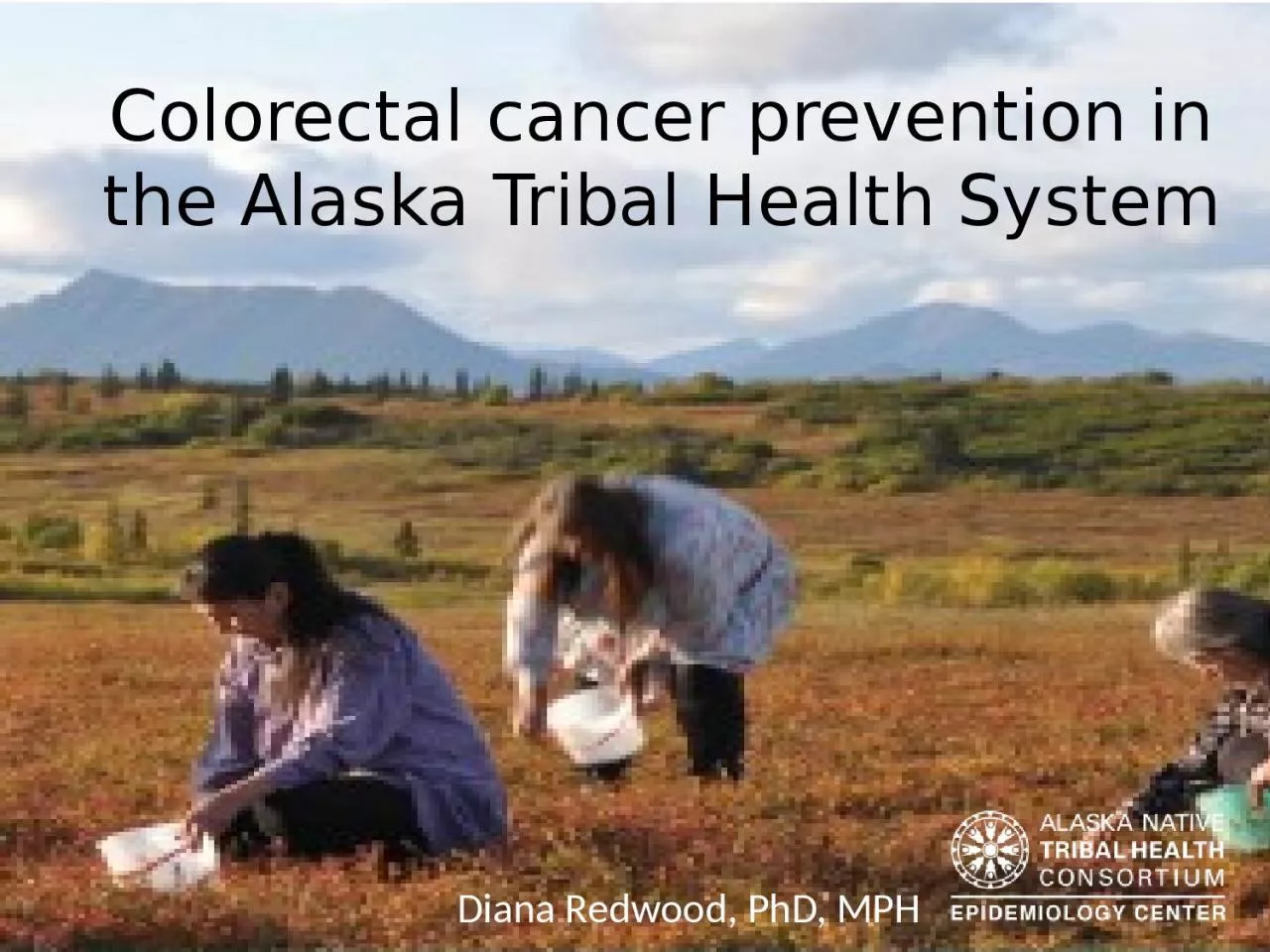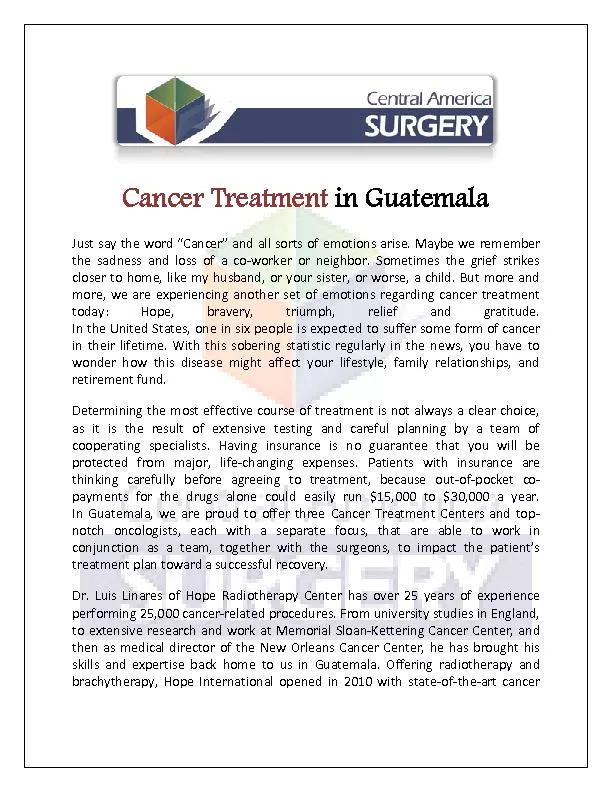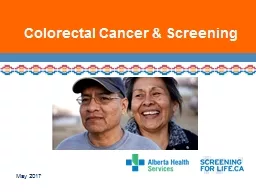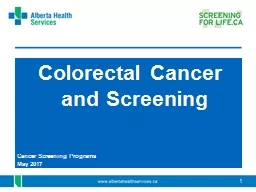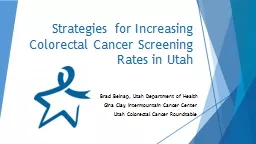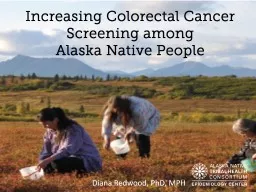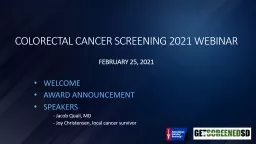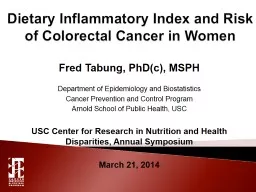PPT-Colorectal cancer prevention in the Alaska
Author : rose | Published Date : 2023-05-22
Tribal Health System Diana Redwood PhD MPH Disclosures CDC and NIH funding Exact Sciences Investigator Award Land Acknowledgement Thank you to the Denaina people
Presentation Embed Code
Download Presentation
Download Presentation The PPT/PDF document "Colorectal cancer prevention in the Alas..." is the property of its rightful owner. Permission is granted to download and print the materials on this website for personal, non-commercial use only, and to display it on your personal computer provided you do not modify the materials and that you retain all copyright notices contained in the materials. By downloading content from our website, you accept the terms of this agreement.
Colorectal cancer prevention in the Alaska: Transcript
Download Rules Of Document
"Colorectal cancer prevention in the Alaska"The content belongs to its owner. You may download and print it for personal use, without modification, and keep all copyright notices. By downloading, you agree to these terms.
Related Documents

